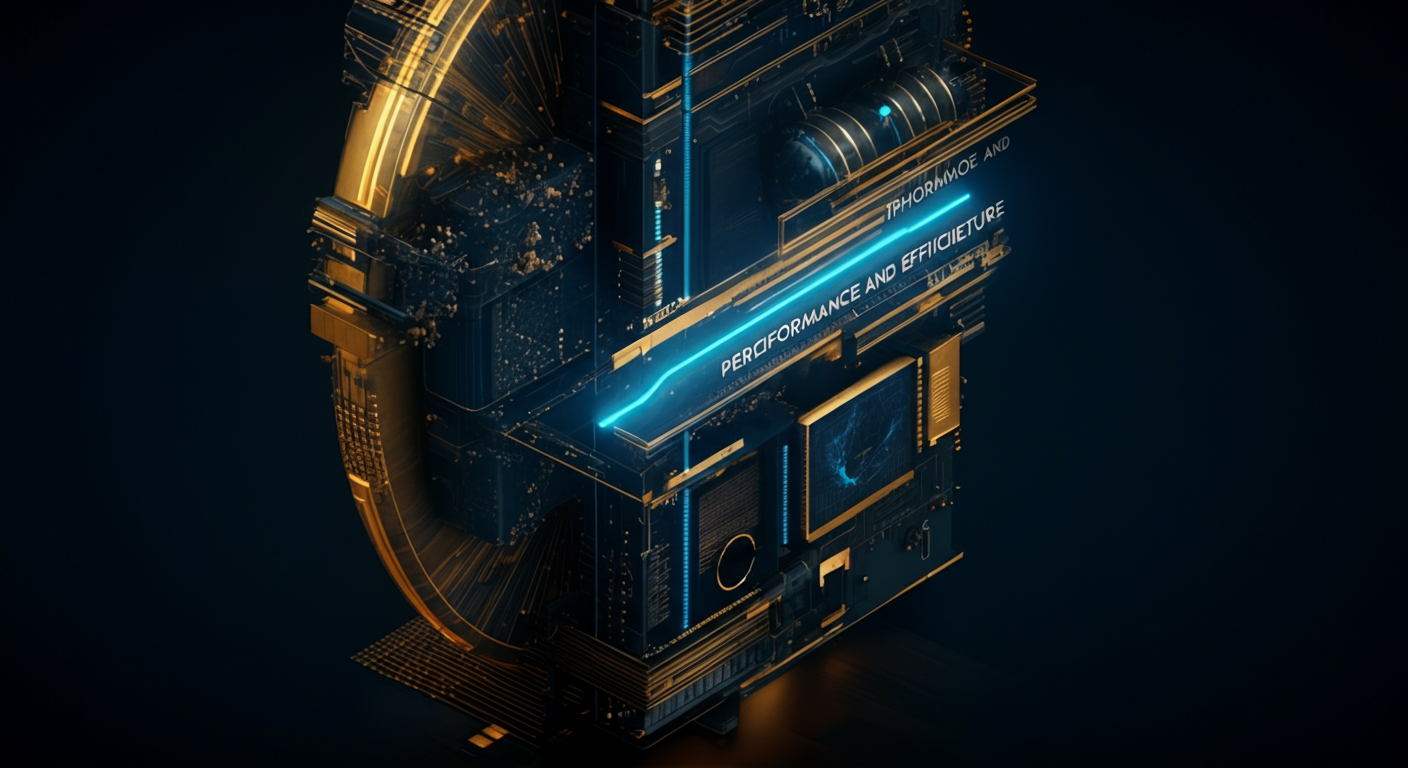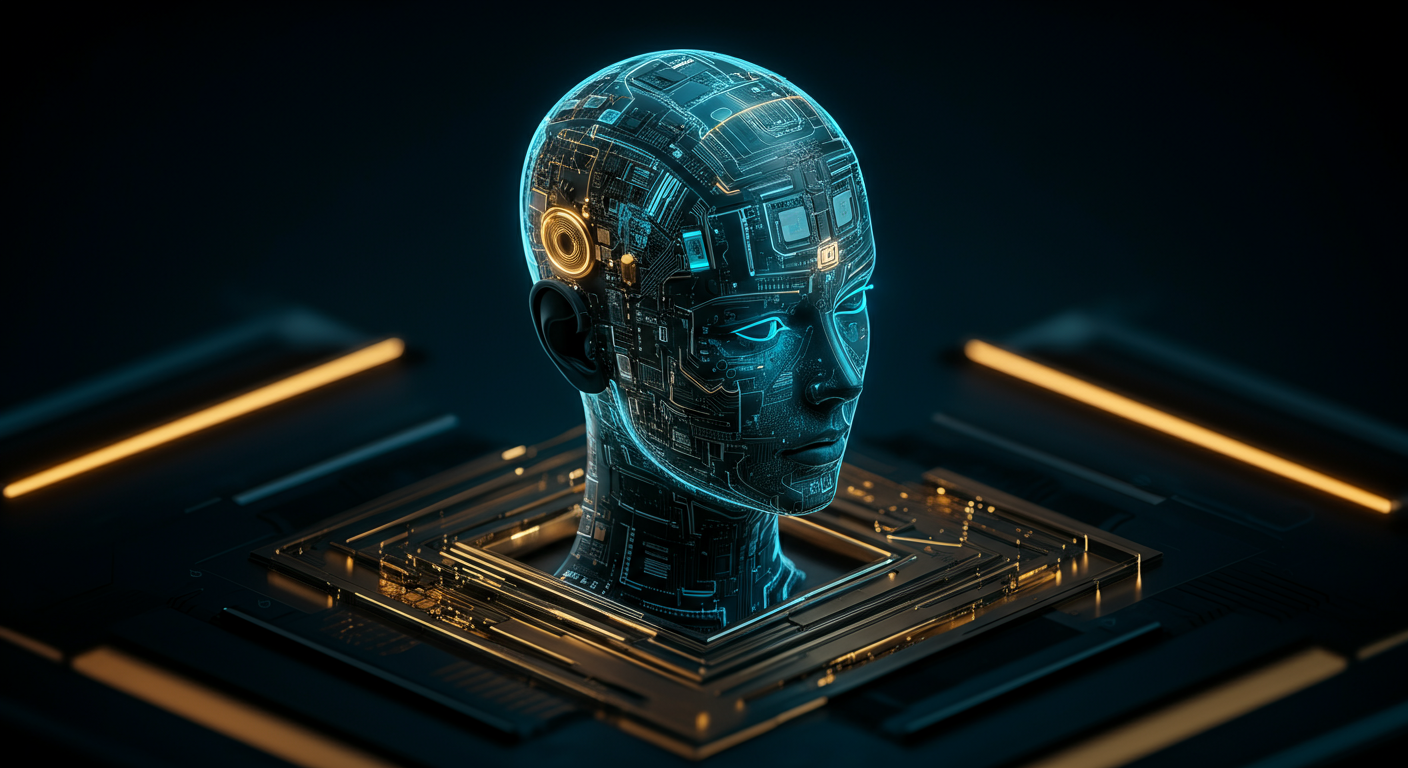Uni-MoE-2.0-Omni: The Definitive Guide to Open-Source Multimodal Mastery

Here's a glimpse into the future of AI, where understanding isn't confined to a single sense.
Introduction: The Dawn of Open Omnimodal AI
Multimodal AI, the ability for a model to process and understand different types of data like text, images, audio, and video, represents a significant leap forward in artificial intelligence, bringing us closer to truly versatile machines. However, progress has been gated by expensive, closed-source models, limiting broad accessibility and innovation.
Uni-MoE-2.0-Omni: The Game Changer
This is where Uni-MoE-2.0-Omni steps in, a groundbreaking open-source alternative built upon the robust Qwen2.5-7B base, offering a potent blend of performance and accessibility. The Uni-MoE-2.0-Omni model is a fascinating piece of AI technology that focuses on understanding and connecting different types of information, including text, images, sounds, and videos.
Why This Matters
Why is this important for the AI community, you ask?
- Democratization of AI: Open-source accessibility fosters innovation by allowing researchers and developers worldwide to contribute and build upon existing work.
- Versatile Understanding: A true "omnimodal" AI can seamlessly process and integrate information from various sources, mirroring human cognition more closely.
- Long-Tail Keyword Support: Handling diverse, less common requests is crucial for real-world applications; this model is specifically designed for that.
What’s Next?
With Uni-MoE-2.0-Omni leading the charge, expect an explosion of creativity and problem-solving across industries, fueled by the power of open-source open-source multimodal AI models. It sets the stage for a new era of AI where collaboration and ingenuity trump the limitations of proprietary systems.
Here's a look into the architecture that powers Uni-MoE-2.0-Omni's multimodal magic.
Foundation: Qwen2.5-7B
The backbone of this architecture is the Qwen2.5-7B base model, chosen for its robust performance and efficiency. This foundation provides a solid starting point for understanding and processing various types of data."Think of it as a highly skilled generalist, ready to learn specialized skills."
Mixture-of-Experts (MoE) for Multimodal Mastery
Uni-MoE-2.0-Omni employs a Mixture-of-Experts (MoE) approach, enhancing both performance and efficiency. Instead of a single, monolithic model, it uses multiple "expert" sub-networks.- Specialized Experts: Each expert is trained to handle specific modalities like text, images, audio, or video.
- Dynamic Routing: The MoE architecture intelligently routes each input to the most relevant expert(s).
- Enhanced Capacity: This allows the model to have a much larger overall capacity compared to a dense model of similar size.
Handling Different Modalities
Each modality (text, image, audio, video) is processed by a specialized expert within the MoE framework.- Text Experts: Focus on understanding language, semantics and context.
- Image Experts: Analyze visual data, object recognition, and scene understanding.
- Audio Experts: Process speech, music, and other sounds.
- Video Experts: Handle temporal information, actions, and events.
Performance and Efficiency Gains

The MoE architecture brings significant advantages:
- Improved Performance: Modality-specific experts enable higher accuracy in handling diverse inputs.
- Increased Efficiency: Not all parameters are activated for every input, leading to faster inference and reduced computational costs.
- Scalability: The architecture is inherently scalable, allowing for the addition of new modalities or improved experts without retraining the entire model.
Uni-MoE-2.0-Omni: The ultimate open-source multimodal AI model, handling everything from text to video with impressive finesse.
Text Understanding
Uni-MoE-2.0-Omni excels in natural language processing (NLP). It's adept at:
- Text classification: Categorizing text into predefined classes.
- Sentiment analysis: Determining the emotional tone of text.
- Question answering: Providing answers based on textual context.
Image Understanding
This model demonstrates strong image understanding abilities.- Image recognition: Identifying objects or scenes within images.
- Object detection: Locating and classifying multiple objects in an image.
- Image captioning: Generating textual descriptions of images.
Audio Understanding
Uni-MoE-2.0-Omni isn't just about visuals; it also handles audio.
- Speech recognition: Transcribing spoken language into text.
- Audio classification: Categorizing audio clips based on their content.
- Sound event detection: Identifying specific sounds within an audio stream.
Video Understanding

The ability to analyze videos is a key feature.
- Action recognition: Identifying activities occurring in a video.
- Video summarization: Creating concise summaries of longer videos.
- Video captioning: Generating textual descriptions for video content.
Uni-MoE-2.0-Omni multimodal performance benchmarks show a promising future for long-tail applications, allowing it to accurately handle varied data inputs.Uni-MoE-2.0-Omni demonstrates a versatile approach to AI, mastering text, image, audio, and video data to empower a new generation of intelligent tools; you can find the Best AI Tools here. It's clear that multimodal AI is not just a buzzword, but a practical reality.
It's time to get hands-on and explore the exciting world of Uni-MoE-2.0-Omni – a powerful, open-source multimodal model designed to handle diverse data types.
Downloading and Installation
First things first, you need to get your hands on the model.
- Head to the official Uni-MoE-2.0-Omni repository.
- Download the model weights and configuration files.
- Use
pipto install the required dependencies, includingtorch,transformers, and any libraries specific to your tasks.
Python Code Examples for Multimodal Tasks
Let's dive into some code! Here’s how you can perform multimodal tasks in Python:
python
from transformers import AutoModelForCausalLM, AutoTokenizer
tokenizer = AutoTokenizer.from_pretrained("your_model_path")
model = AutoModelForCausalLM.from_pretrained("your_model_path")
Example: Image captioning
input_text = "Describe this image: [image_path]"
inputs = tokenizer(input_text, return_tensors="pt")
outputs = model.generate(inputs)
print(tokenizer.decode(outputs[0]))
Hardware Requirements and Optimization
Uni-MoE-2.0-Omni can be resource-intensive, so optimization is key.
- Minimum: A high-end GPU with at least 24GB of VRAM is recommended for optimal performance.
- Techniques: Experiment with techniques like quantization, mixed-precision training, and distributed inference to reduce memory footprint and accelerate computation.
Integration into Your Projects
Integrating Uni-MoE-2.0-Omni into your projects is straightforward.
- Utilize the provided APIs and libraries for seamless integration.
- Customize the model by fine-tuning it on your specific datasets for optimal performance.
- Refer to the project documentation and Uni-MoE-2.0-Omni code examples Python online to get started quickly.
One critical aspect of evaluating any AI model is understanding its performance, and Uni-MoE-2.0-Omni is no exception.
Benchmarking Datasets
Uni-MoE-2.0-Omni's benchmark results are gauged using diverse datasets, crucial for assessing its proficiency across varied modalities. These include:- Text-based datasets: Evaluating language understanding and generation capabilities
- Image datasets: Assessing image recognition, classification, and generation abilities
- Audio datasets: Analyzing speech recognition and audio processing prowess
- Video datasets: Examining video understanding and action recognition performance
Performance Metrics & Trade-offs
Uni-MoE-2.0-Omni benchmark results highlight critical trade-offs:- Performance vs. Model Size: Larger models often yield better results, but come with increased computational demands.
- Computational Cost: Training and inference costs are major considerations, especially for real-world applications. The BentoML LLM Optimizer helps tackle these challenges.
Comparison with Other Models
How does Uni-MoE-2.0-Omni stack up against the competition?- Open-source models: Benchmarks are essential for showcasing superiority or parity.
- Closed-source models (GPT-4V, Gemini): A key question is how well Uni-MoE-2.0-Omni bridges the gap with these leading, albeit proprietary, offerings.
Limitations and Future Improvements
Acknowledging limitations is vital:- Identify areas where Uni-MoE-2.0-Omni falls short.
- Suggest potential improvements and future research directions.
- Highlighting open-source alternatives like OLMo ASR allows you to be cost-effective.
Here’s how Uni-MoE-2.0-Omni's open-source nature supercharges its potential.
Community-Driven Evolution
The Uni-MoE-2.0-Omni open-source community is a driving force, constantly refining and expanding the model's capabilities. Think of it as a collective intelligence, where diverse perspectives converge to enhance performance.- Collective Improvements: Anyone can contribute code, report bugs, or suggest enhancements.
- Peer Review: Ensures code quality and identifies potential issues early.
- Knowledge Sharing: A vibrant forum for users to exchange tips, tricks, and best practices.
Unparalleled Customization
Being open-source means you're not locked into a vendor's ecosystem. You can tailor the model to your precise requirements.- Fine-tuning: Adapt the model to specific datasets and tasks.
- Modular Design: Swap out components or integrate custom modules.
- > "Give me a lever long enough, and a fulcrum on which to place it, and I shall move the world." - Archimedes, foreshadowing the power of open-source customization!
Roadmap and Future Horizons
The future of Uni-MoE-2.0-Omni is an open book, shaped by the community’s vision and contributions. This ensures continuous improvement and adaptability.- Contributing is Key: Opportunities abound for developers, researchers, and AI enthusiasts to contribute.
- Innovation Catalyst: An open ecosystem fosters rapid innovation, leading to breakthroughs in multimodal AI.
- Long-Term Viability: Open-source projects tend to have longer lifespans due to community ownership.
Harnessing the potential of Uni-MoE-2.0-Omni transcends theoretical applications, offering tangible solutions across diverse sectors.
Multimodal Search & Information Retrieval
Uni-MoE-2.0-Omni excels in multimodal search, connecting data points across disparate formats.
Imagine searching for a specific architectural design: instead of relying solely on text descriptions, users could input a sketch, and the AI would retrieve relevant plans, images, and construction documents.
- Facilitates more intuitive and comprehensive information retrieval.
- Enables innovative discovery by connecting previously siloed data.
Content Creation & Generation
This model can also streamline content creation.
- Automatically generates descriptions for images or creates compelling narratives from video footage.
- This could be leveraged by marketing teams to create engaging campaigns, or by educators to craft tailored learning materials.
Automated Video Analysis
Uni-MoE-2.0-Omni can automatically analyze video content.
- Identifies objects, people, and events within videos.
- Used for security surveillance, content moderation, or generating metadata for large video libraries.
Assistive Technologies
Multimodal AI has the potential to create more intuitive and accessible assistive tech.
- Enabling visually impaired users to 'see' images through detailed audio descriptions.
- Facilitating communication for individuals with speech impediments through enhanced voice recognition and synthesis. Consider Pokee AI, a pocket-sized AI companion that could be further enhanced by Uni-MoE-2.0-Omni to provide even more personalized assistance.
Conclusion: Empowering the Future of Multimodal AI
Uni-MoE-2.0-Omni stands out with its impressive features and capabilities, offering a compelling open-source solution within the multimodal AI landscape. This model empowers developers and researchers to explore and build innovative applications, particularly with access to advanced AI technologies that were once exclusive.
Key Takeaways
- Multimodal Mastery: Handles diverse data types, like text, images, and audio, opening doors for richer AI experiences.
- Open-Source Alternative: Provides a powerful and accessible alternative to proprietary multimodal models.
- Community Driven: Encourages exploration and contributions to push the boundaries of multimodal AI research and applications.
- Democratization of AI: Lowers the barrier to entry for advanced AI, making it accessible to a broader audience.
Long-Term Impact: The Future of Open-Source Multimodal AI
The rise of open-source multimodal models like Uni-MoE-2.0-Omni holds immense potential, promising to shape the future of open-source multimodal AI by:- Accelerating Innovation: Collaborative development can lead to faster breakthroughs and more diverse applications.
- Enhancing Transparency: Open models allow for greater scrutiny, addressing biases and promoting ethical AI development.
- Fostering Education: Open-source projects provide valuable learning resources for aspiring AI practitioners.
Keywords
Uni-MoE-2.0-Omni, Multimodal AI, Open-source AI, Qwen2.5-7B, Mixture of Experts, Text understanding, Image understanding, Audio understanding, Video understanding, Multimodal models, AI models, NLP, Computer Vision, Speech recognition, AI
Hashtags
#UniMoE2.0 #MultimodalAI #OpenSourceAI #Qwen2.5 #AIML
Recommended AI tools

Your AI assistant for conversation, research, and productivity—now with apps and advanced voice features.

Bring your ideas to life: create realistic videos from text, images, or video with AI-powered Sora.

Your everyday Google AI assistant for creativity, research, and productivity

Accurate answers, powered by AI.

Open-weight, efficient AI models for advanced reasoning and research.

Generate on-brand AI images from text, sketches, or photos—fast, realistic, and ready for commercial use.
About the Author

Written by
Dr. William Bobos
Dr. William Bobos (known as 'Dr. Bob') is a long-time AI expert focused on practical evaluations of AI tools and frameworks. He frequently tests new releases, reads academic papers, and tracks industry news to translate breakthroughs into real-world use. At Best AI Tools, he curates clear, actionable insights for builders, researchers, and decision-makers.
More from Dr.

